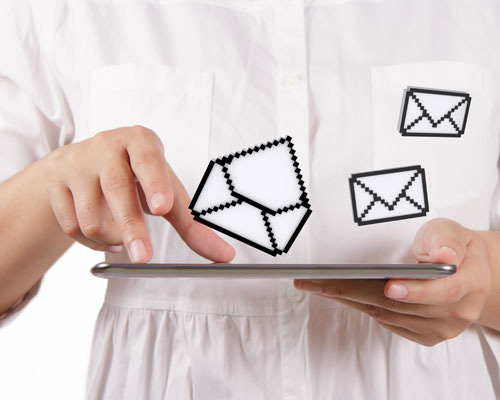Although each company or program must create their own set of standards that best match their brand and vision, here are a few "no-brainers" every business should consider when writing their standards:
1. Consistency counts!
Choose a font and size that everyone will use, no matter what. And when it comes to signatures, make them brief and consistent. Avoid adding logos or other attachments, inspirational quotes, et cetera.
2. Be concise and direct.
Do not make an e-mail message longer than it needs to be. People don't actually want to read something; most often, they are skimming to find an answer. This is especially important with increased smartphone use. Still, avoid sounding rushed and impersonal by always including a salutation and closing.
3. Use proper spelling, grammar, and punctuation.
Improper spelling, grammar, and punctuation can give a bad impression of a company. Most e-mail systems alert you to misspelled words, so take note of suggested corrections. Also, make sure you re-read your message before sending. If you think you have a challenge in this area, do not be embarrassed! Ask a co-worker to proof an important e-mail, or create templates for those you use often and have them proofed to avoid errors.
4. Use names, acknowledge, and validate.
Address the person each time you communicate, even if it's back and forth, and always use their name. Use judgment when choosing the salutation. For example, if someone were contacting you with a problem, you wouldn't use something upbeat and cheery. The beginning of message should always start by acknowledging the person's request or problem. Take it a step further by validating them; people like to feel heard and important! Closing your e-mail should include a brief sentence using the recipient's name again, which makes them feel free to keep the exchange going.
5. Set standards on how soon to reply
At our company, each e-mail must be replied to within twenty-four hours, and preferably within the same working day. If the e-mail is complicated, just send an e-mail back saying you have received it and will get back to the sender. This will put the client's mind at rest, and usually they will be patient. On the flip side, there's also been talk lately about responding too soon. If you consistently respond immediately to someone, you're actually training him or her to expect it. And when it doesn't happen, whoa ... look out! They will let you know of their disappointment! Unless it's an emergency, there's usually nothing wrong with waiting a bit.
6. Use proper structure and layout.
Since reading from a screen is more difficult than reading from paper, the structure and layout is important for e-mail messages. Use short paragraphs and blank lines between each paragraph. When making points, number them or mark each point separately to clarify the overview.
7. NEVER USE ALL CAPS. PEOPLE WILL THINK YOU ARE SHOUTING.
8. Do not overuse "Reply All."
Only use "Reply All" if you really need your message to be seen by each person who received the original message. Otherwise, you risk filling e-mail inboxes with irrelevant messages. No one likes that! And, consider FERPA and other student privacy guidelines.
9. Take care with abbreviations and emoticons.
In professional e-mail, try not to use abbreviations such as BTW (by the way) and LOL (laugh out loud). The recipient might not be aware of the meanings of the abbreviations, or misinterpret them. ("Lots of Love" is a common misinterpretation of LOL.) In business e-mail, these are generally not appropriate. The same goes for emoticons (smiley faces made from a colon and parenthesis, and the like), which may be perceived as unprofessional.
10. Avoid using URGENT and IMPORTANT.
Even more so than the high-priority option, you must at all times try to avoid these types of words in an e-mail or subject line. Only use this if it truly is an urgent or important message.
Want more tips? Here's a quick, entertaining video you can share with your staff or co-workers.
Written by Jill Carroll, marketing manager for Serendipity Media.




